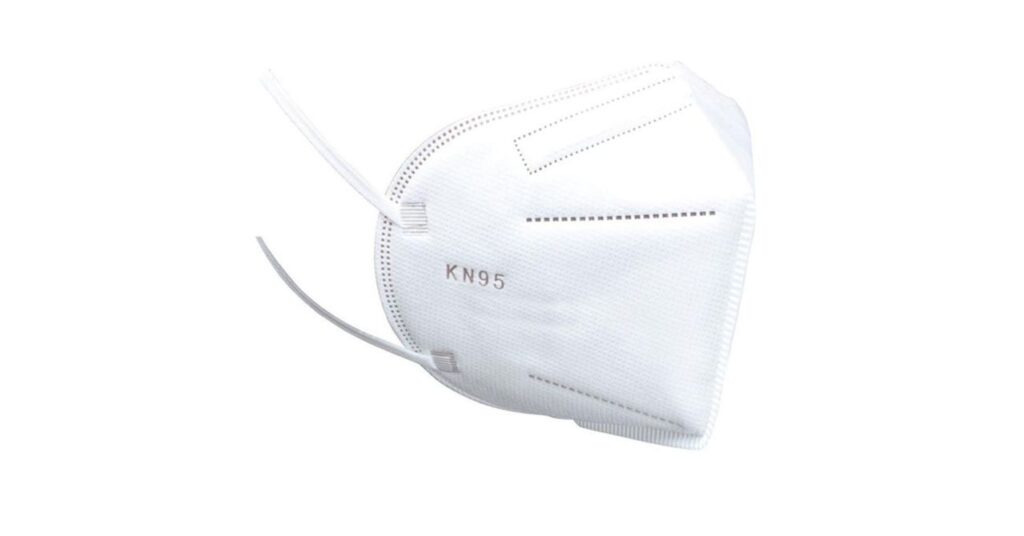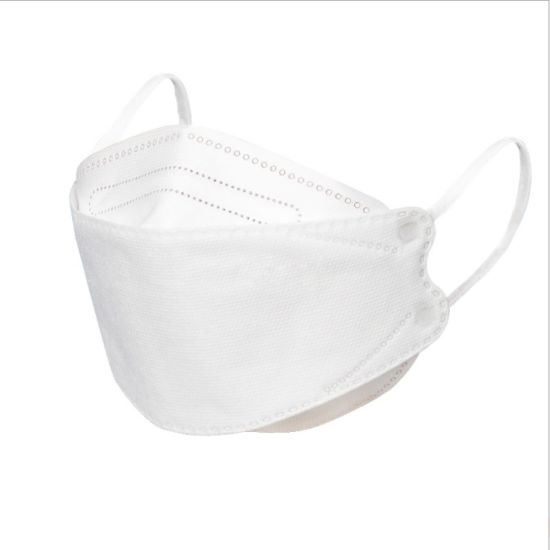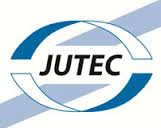【Resumen】Wearing masks is the basic Way to resist Viruses after the outbreak of New Coronavirus pneumonia in 2020.
The national health and Health Committee recommends that high risk exposures such as front-line medical staff and all staff working in isolation wards choose medical masks to protect them The protective properties of medical respirators include filtration efficiency,synthetic blood penetration,and so on.The specific analysis of surface moisture resistance and tightness aims to improve the front-line staff and the public’s understanding of the protective effect and practical application of medical protective masks.
[Keywords]medicalprotective mask;protective performance; CCOVID-2019

Preface
In 2020, the new coronavirus (COVID-2019) pneumonia epidemic is raging, and its transmission is mainly through respiratory routes such as droplets, aerosols, and close contact, and proper selection and wearing of masks is an effective measure to interrupt the virus transmission through droplets. At present, the masks widely used to prevent and control the outbreak mainly include medical masks (medical protective masks, medical surgical masks, single-use medical masks) and industrial masks (KN95, N95, KF94, etc.). Why are medical masks suitable for high-risk exposed personnel but not for others, and what are the advantages of their protective properties? This paper analyzes the main protective performance indicators of medical protective masks in China according to GB/T19083-2010 “Technical Requirements for Medical Protective Masks” (GB/T19083-2010), so as to describe the protective performance and application of medical protective masks, and aims to improve the awareness of the protective effect of medical protective masks among front-line staff and people in the epidemic prevention and control work. The aim is to raise awareness of the protective effect of medical protective masks among front-line workers and the public, provide reference for the selection of masks in front-line prevention and control work, and advocate the public not to choose such masks to
At the same time, we advocate people not to choose these masks and reduce the waste of resources caused by excessive protection.
- Medical protective masks
Medical protective mask is a kind of airtight self-absorbing and filtering medical protective equipment that can effectively filter out fine particles in the air and block droplets, blood, body fluids and spatters.
It is suitable for front-line medical personnel involved in various clinical medical work, especially epidemic prevention work.
According to GB/T19083-2010 standard setting, the assessment index of medical protective masks can be summarized as appearance structure, comfort performance, safety
The four aspects of protection performance. Appearance structure mainly assesses the basic requirements of the mask, nose clip, mask band, to ensure that the mask can be used normally: comfort performance only assesses the airflow resistance (inspiratory resistance), to ensure that the wearer breathes smoothly; safety performance assessment of flame retardancy, microorganisms, ethylene oxide residue, skin irritation, to exclude the mask fire, microbial overload, inhalation of toxic gas ethylene oxide, allergic potential; protection performance assessment of filtration efficiency, the Synthetic blood penetration, surface moisture resistance, tightness, these are also the key assessment indicators of medical protective masks.

2.Protective performance of medical protective masks
2.1 Filtration efficiency
Filtration efficiency refers to the percentage of air particles filtered by the mask under the specified testing conditions, which is both an important factor in determining the filtering and protective performance of the mask.
It is an important factor in determining the filtering and protection performance of the mask, and is also a fundamental factor in blocking viruses in the air. It is divided into bacterial filtration efficiency (BFE) and particle filtration efficiency (PFE), PFE can also be divided into oil and non-oil particle filtration efficiency. In GB19083 a 2010 standard, in the case of gas flow rate of 852L / min, the mask on non-oily particles filtration efficiency should meet the following requirements (see Table 2): Level 1 ≥ 95%; Level 2 ≥ 99%; Level 3 ≥ 99.97%. In terms of protection effect, medical protective masks required to block mostly droplets, aerosols, spatter and other non-oily particles, so there is no need to assess the BFE and oily particle filtration efficiency project. The higher the filtration efficiency of the same category of masks, the stronger the ability to filter and block microscopic particles in the air. 2020 February “New England Journal” has an article confirming that the new coronavirus diameter between 60 ~ 140nm, that is, 0.06 ~ 0.14um, testing medical protective masks over The filtering efficiency of 0.3um sodium chloride aerosol particles is used to grade the filtration efficiency of non-oil particles, and the diameter of the particles detected by the mask is larger than the diameter of the new coronavirus, but the virus cannot survive for a long time from the host cell and needs to be attached to droplets and aerosols for droplet and aerosol transmission, so the filtering efficiency of the medical protective mask plays a major role in blocking the transmission of the new coronavirus in the air Therefore, the filtration efficiency of medical protective masks plays a major role in blocking the airborne transmission of novel coronaviruses.
2.2 Anti-synthetic blood penetration performance
Anti-blood penetration performance is an important protection index of medical protective supplies. In the event of splashing, spraying or splashing of blood, body fluids, etc., this performance of the mask can reduce the level of contact between blood and the wearer, reduce the risk of blood-borne pathogens, and protect medical personnel from disease infection from blood or other body fluids. In the GB19083-2010 standard, 2mL of synthetic blood is sprayed into the mask at a pressure of 10.7kPa (80mHg) and no penetration should occur on the inside of the mask. Doctors in the process of surgery will inevitably occur in the patient’s blood, body fluids splash, wearing medical protective masks or medical surgical masks with anti-blood penetration properties can prevent blood splash to the doctor’s face resulting in occupational exposure, but in thoracic surgery or surgery with a high degree of infectiousness (such as new crown pneumonia) priority recommended to wear medical protective masks.
2.3 Surface moisture resistance
Mask surface moisture resistance refers to the mask resistance to be water wetting or penetration characteristics, generally through the wetting level to measure the surface resistance to moisture, GB/T19083-2010 standard, medical protective masks external surface wetting level is not less than GB/T4745-1997 “textile waterproof performance of the detection and evaluation of the wetting method” standard in the provisions of level 3, is now used GB/T4745-1997 in the level of moisture resistance to the mask surface moisture resistance for classification, surface moisture resistance reflects the ability of the mask to isolate the liquid, effectively reduce the risk of infectious occupational exposure to medical personnel caused by splashes of body fluids, secretions, etc., to better protect the safety of medical personnel, its nature and protective properties are similar to the resistance to synthetic blood penetration.

2.4 Fit
The GB/T19083-2010 standard stipulates that the design of medical protective masks should provide a good fit, and the total adaptation factor of the mask should be not less than 100. The mask not only affects the fit but also significantly reduces the comfort level. The shape of the mask has a great influence on the fit of the mask and the user’s face, such as the “rectangular” flat mask because the edge and the nose clip are easy to leak and the fit cannot meet the standard requirements, so it cannot be used as a medical protective mask. If the face and mask do not fit closely when wearing the mask, the outside air will enter the human respiratory tract from the gap between the mask and the face without passing through the isolation filter layer, thus significantly weakening the protective performance of the mask. The fit factor is the ratio of the concentration of the test agent outside the mask to the concentration inside the mask when the person wears the mask for the fit test, and its size reflects the fit performance of the mask, in accordance with OSHA respiratory protection standard requirements, the fit factor ≥ 100 indicates that the fit of the mask meets the protection requirements and can play a better protective role for the wearer. High-risk exposed personnel can wear medical protective masks with good fit and fit factor. The medical protective mask with good fit and suitability, the mask and its face fit closely, long time wear limit will appear face, ear strangulation and breathing difficulties and other discomfort, but so as to ensure that their exhaled and inhaled air are filtered by the filter layer, blocking the air droplets, aerosols may carry the new coronavirus.
3.Conclusión
Medical protective masks have good filtration protection for droplets, aerosols, body fluids, blood, secretions, spatter, etc., which is related to
KN95, N95, KF94 and other industrial masks do not have synthetic blood penetration resistance, surface moisture resistance; medical surgical masks do not have surface moisture resistance, tightness”; single-use medical masks do not have synthetic blood penetration resistance, particle filtration efficiency, surface moisture resistance, tightness. moisture resistance, tightness”. Therefore, medical protective masks are the highest level of protection in China, and are recommended to be worn by high-risk exposed personnel such as front-line medical personnel and all staff working in isolation wards during the epidemic of new coronavirus pneumonia. The medical protective masks are not recommended for such personnel for comfort and material considerations.
 3M
3M Ansell
Ansell Dellta Plus
Dellta Plus Drager
Drager edelrid
edelrid Honeywell
Honeywell JUTEC
JUTEC lakeland
lakeland MSA
MSA Cerdo nuevo
Cerdo nuevo Weldas
Weldas